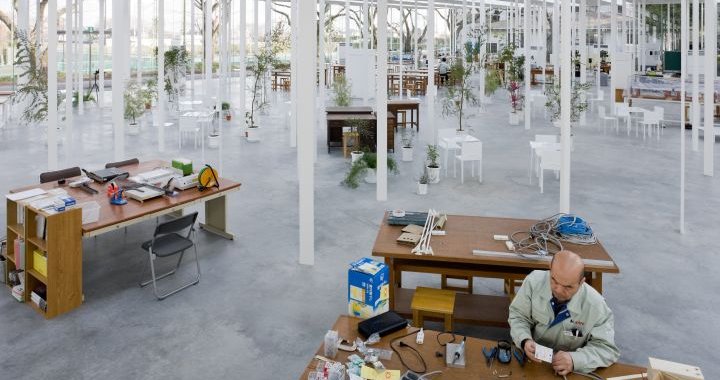
Helsinki’s architecture museum aims to enlighten the masses
Laura Palotie
18/10/2013
The skyline of Helsinki is undergoing a creative evolution. Ambitious projects including a massive library for the city’s epicentre and a proposed public pool and seaside leisure complex by the harbour are making headlines. In the meantime, the former industrial waterfront area of Kalasatama in eastern Helsinki is transforming into a new commercial and residential neighbourhood of 20,000 inhabitants. Cyclists are already enjoying a 1.3-kilometre long bike highway called Baana in the centre of town, as well as a slaughterhouse-turned event space, urban garden and local food market called the Abattoir near Kalasatama.

MFA Museum exterior. © MFA/ Voitto Niemelä
Many projects and exhibitions during Helsinki’s 2012 World Design Capital year focused on combining innovation, sustainability and wellbeing with city design; now the museum of Finnish architecture (MFA), closely involved with the Design Capital year, is focusing on furthering the average city dweller’s understanding of architecture and urban planning. The museum’s programming this fall includes exhibitions, workshops, walking tours and lectures designed to extend public outreach.
“Our daily mission is to gradually untangle the secrets of architecture and make it a more open and approachable field,” says museum director JuuliaKauste, adding that last year’s festivities happened at an optimal time for the MFA. “We were already changing our brand and look, and working to increase our programming and presence.” According to Kauste, visitor numbers to the MFA quadrupled between 2011 and 2012, and the growth continues.
This summer the MFA and Helsinki Design Museum co-organised an urban garden project. Among this autumn’s new offerings, meanwhile, are a series of forums addressing the ways in which construction impacts society; among the speakers has been Finland’s former Prime Minister EskoAho and sustainability and development guru Carl Mossfeldt.

The Museum of Finnish Architecture is designed by Magnus Scherfbeckin, and an example of Finnish renaissance revival. © MFA/ Ilari Järvinen
In addition, the museum will continue to host walking tours of Helsinki’s historical districts that launched in conjunction with the Design Capital year. Roughly 30 people attended a recent tour of the early 20th century working-class neighbourhood of Vallila, in spite of the drizzly and frosty autumn weather.
The museum’s current exhibition, entitled Transformation – Towards a Sustainable Future, explores the many ways in which sustainability can manifest itself in architecture; these might include the thoughtful reuse of abandoned urban spaces and the implementation of environmentally sound materials. Projects on display range from the rebuilding of a Chinese village after the 2008 Sichuan earthquake to the construction of stylish shared spaces – parks and car-free zones – in Manhattan.
A parallel exhibition showcases recent winners of the Global Award for Sustainable Architecture. In conjunction with the exhibition, the museum has also hosted a workshop encouraging families to evaluate their everyday habits from a more ecological angle.
“Architecture shouldn’t just be viewed in terms of constructed objects but in relation to neighbourhoods and city infrastructure in general,” says Kauste. “This field has an impact on why a young family would or would not want to move to a suburban area, and relates to things like learning environments at schools.”

Transforamtion. Aalto University: Five Three House. © Aalto University & Five Three House Team
Promoting Finnish architecture abroad is another one of the MFA’s core missions: its Best School in the World exhibition, addressing ways in which school architecture contributes to the success of the Finnish educational system, has been among its recent success stories. The exhibition premiered at the Venice Biennale in 2010 and has travelled to France, the US Turkey and Austria; this month it will be shown in Seoul, Korea.
“One could say that Finnish architecture experienced a quiet period after the recession of the 1990s; there wasn’t a whole lot of visibility abroad,” says Kauste. “But now, with so much new construction going on in Finland, architects have a lot to do. Finnish architecture is also respected internationally, and people want to know more about it.”
Kauste adds that Finland’s tradition of launching major building projects through architectural design competitions is unique. “These competitions allow young architects to take part in large, ambitious initiatives in a hands-on way; our system is less hierarchical than in many other countries.”
Transformation - Towards a Sustainable Future and the Global Award for Sustainable Architecture exhibitions will be shown at the Museum of Finnish Architecture until February 2, 2014.